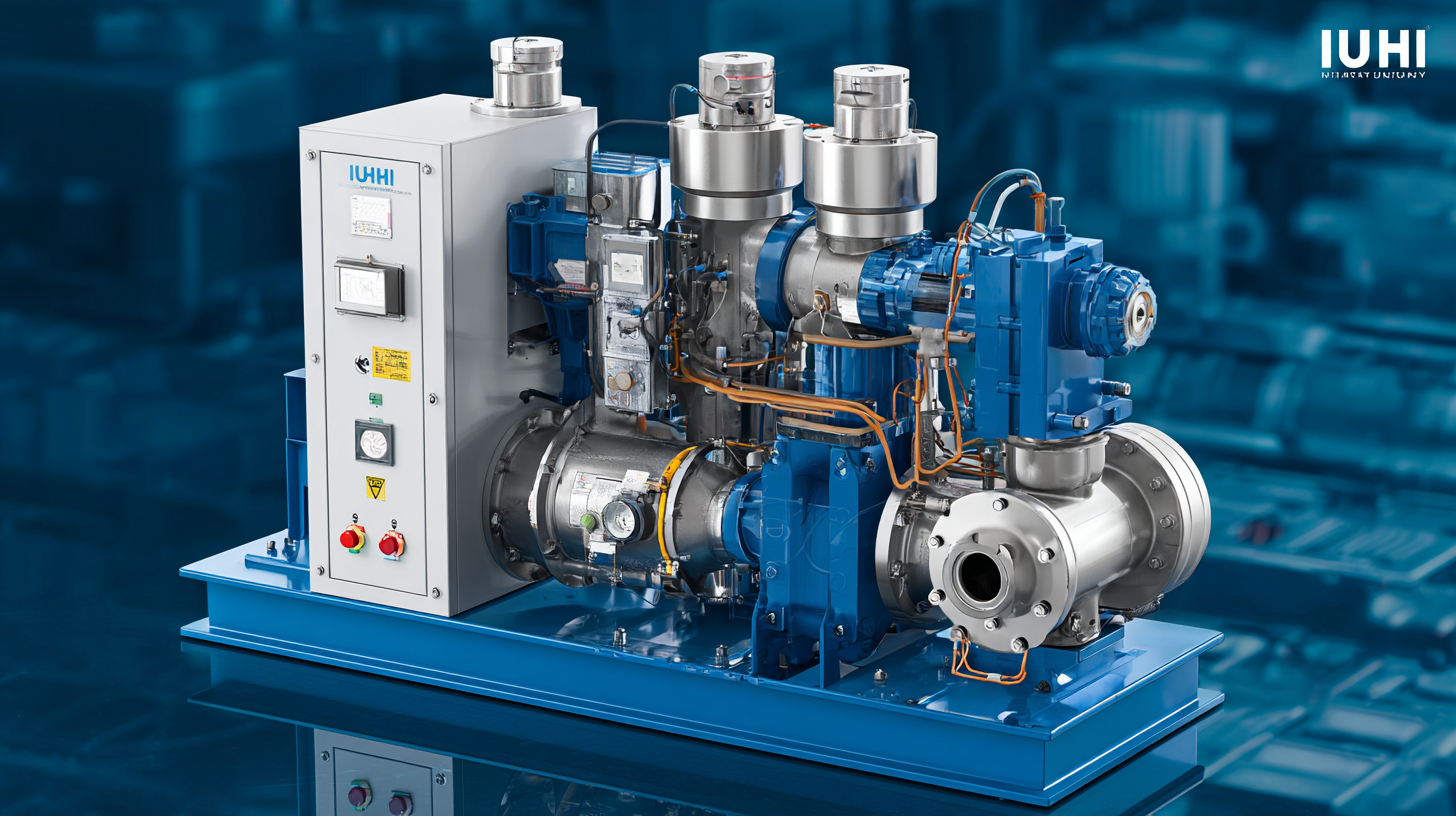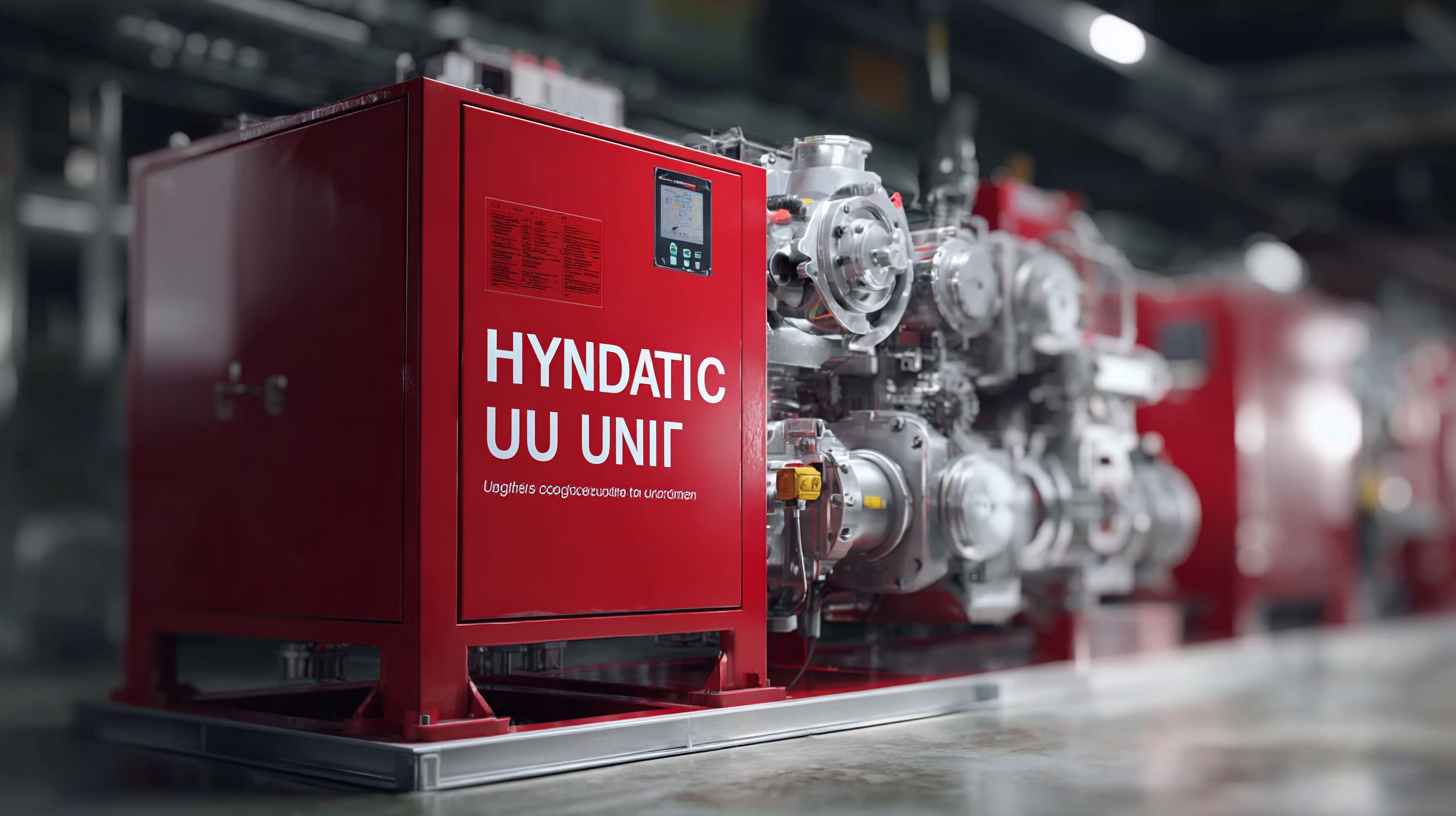- Our Products
- Repairs & Service
- Custom Design
- Blog
- About Us
- Resources
- Industries
- Contact Us
- Contact Bestrei UK
- Compliments / Complaints
- Global Supply
As we advance towards 2025, the global hydraulic unit market is poised for significant transformation amidst evolving supply chain challenges. According to a recent report by MarketsandMarkets, the hydraulic unit sector is projected to reach $XX billion by 2025, driven largely by increasing demand in industries such as construction and manufacturing. However, inefficiencies in hydraulic unit systems can critically undermine productivity and sustainability, complicating supply chain dynamics.

With a focus on enhancing efficiency and reducing operational costs, companies are compelled to navigate multifaceted obstacles including fluctuating raw material prices and technological integration. This blog will explore these challenges in-depth while offering insights on strategies to improve hydraulic unit efficiency, ensuring that businesses stay competitive in an increasingly complex global market.
Understanding hydraulic unit efficiency is crucial for optimizing operations within global supply chains. Hydraulic systems are integral to industries ranging from manufacturing to logistics, allowing for effective power transmission and movement. However, fluctuating demand, resource availability, and environmental regulations can challenge these systems' efficiency. Stakeholders must adapt strategies to increase reliability and reduce costs across the board.
One tip for enhancing hydraulic unit efficiency is to invest in regular maintenance and inspections. This ensures that any potential inefficiencies or malfunctions are caught early, preventing costly downtime and repairs. Additionally, implementing advanced monitoring technologies can help track system performance in real-time, allowing for timely adjustments and improvements.
Another effective approach is to foster collaboration among supply chain partners. Sharing data on performance metrics can lead to greater transparency and help identify best practices in hydraulic unit usage. By working together, companies can streamline operations, reduce waste, and ultimately improve the efficiency of hydraulic systems throughout the supply chain.

The global market for hydraulic units is projected to reach a value of $1.35 billion in 2024, with an expected growth to $1.47 billion in 2025, ultimately soaring to $2.31 billion by 2032. This growth is fueled by an increasing demand for efficiency in hydraulic systems that play a crucial role across various industries, including the fishing sector. As nations increasingly focus on maritime exploration and fishing, the need for advanced and reliable hydraulic equipment becomes paramount.
Key factors influencing the efficiency of hydraulic units worldwide include the design and material composition of the components, levels of maintenance, and adaptation to specific operational requirements. For example, using lightweight, durable materials can enhance both performance and fuel efficiency. Additionally, regular maintenance ensures optimal functioning and longevity of hydraulic units.
Tips for Maximizing Efficiency:
Navigating the complexities of hydraulic unit efficiency in global supply chains requires a detailed understanding of performance metrics. Recent studies show that optimizing power consumption and position control in electro-hydraulic systems is crucial, with innovative techniques improving energy efficiency by as much as 25%. This aligns with findings that emphasize the reduction of power losses within hydraulic systems, particularly in energy conversion methods. As noted in a recent comparative analysis, axial piston pumps have demonstrated a total efficiency that is significantly influenced by design modifications, showcasing an increase of up to 15% when adjustments are made to the rotational speed and flow rates.
Moreover, the application of machine learning methodologies presents a transformative opportunity for performance enhancement in hydraulic units. For instance, advanced predictive models are being deployed to innovate fault detection systems, ensuring resilience in operations. A digital twin framework can provide real-time data analysis to optimize maintenance schedules, ultimately enhancing the operational lifespan of hydraulic infrastructure. This synergy between data-driven strategies and traditional efficiency metrics facilitates a comprehensive approach to improving hydraulic unit performance across varied environmental conditions.
Achieving consistent efficiency in hydraulic unit systems across global supply chains presents a myriad of challenges that businesses must navigate. One of the primary issues is the variation in manufacturing standards and practices. Different countries may have unique regulations and technological capabilities, which can lead to discrepancies in product quality and performance. When components are sourced internationally, this inconsistency can amplify, causing inefficiencies that affect the entire supply chain, from production to delivery.
Logistical challenges also play a significant role in maintaining efficiency across borders. Factors such as transportation delays, customs regulations, and varying infrastructure quality can disrupt the flow of materials and components. In regions with underdeveloped logistics networks, even the most efficient design can suffer delays, resulting in missed production targets and increased costs. To mitigate these issues, companies must invest in robust supply chain management strategies that emphasize collaboration, standardization, and technology integration, ensuring a seamless operation despite geographical barriers.

In today's interconnected world, enhancing hydraulic unit efficiency within supply chains is crucial for achieving optimal operational performance. One effective strategy involves investing in smart technology that allows for real-time monitoring and diagnostics of hydraulic systems. By leveraging Internet of Things (IoT) devices, companies can collect and analyze data on fluid dynamics, pressure levels, and equipment wear. This proactive approach not only minimizes downtime but also enables timely maintenance, leading to longer equipment lifespans and reduced costs.
Another key strategy is fostering collaboration between suppliers and manufacturers. By sharing insights on best practices and performance metrics, organizations can identify inefficiencies in their hydraulic systems and address them collectively. Implementing standardized protocols across the supply chain enhances understanding and consistency, ultimately leading to improved hydraulic unit performance. Moreover, training employees on the latest hydraulic technologies and practices ensures that the workforce is well-equipped to tackle challenges, driving innovation and efficiency throughout the supply chain.
Bestrei UK has a strong footprint across Europe
United Kingdom, Ireland, France, Germany, Norway, Finland Sweden, Spain, Italy